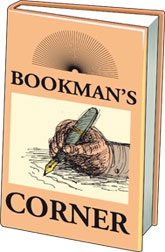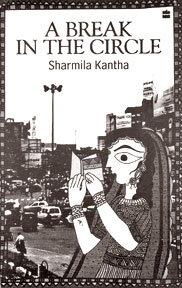
Source book on Sinhalese exegetical literature
|

Sinhala Vakyana Sahityaya (Sinhalese exegetical literature)
|
Ven. Agalakada Sirisumana Thera has come out with an important
publication dealing with Sinhalese exegetical literature.
Generally the classical Sinhalese literature commenced in the
Anuradhapura era. However, so far scholars have taken a little interest
in the Sinhalese exegetical literature which continued from Anuradhapura
era to Dambadeniya era.
Among the scholars who compiled books on Sinhalese exegetical
literature include Ananda Kulasuriya and Gunawardena Nanayakkara.
The book traverses the corpus of Sinhalese exegetical literature from
its very commencement. It also examines the influence of exegetes on
diverse sources. It has also explored how far the exegetes followed the
Buddhist tradition of exegesis in examining the work at hand. The book
reviews Sinhalese exegetical literature on four main categories.
The book which has four chapters, examines exegesis and the Indian
background of exegesis in its first chapter. It is stated that as
Sinhalese were interested in reading the three main discourses in
Buddhism (Thripitaka) and literature associated with it (Attakatha)
brought into the island by Ven. Mahinda Thera and they were translated
into Sinhalese. Later this canon was translated into Pali by Buddhagosha
Thera. With the evolution of Sinhalese language, Sinhalese Buddhist
literature became outdated and Pali literature became popular. Since
most of the readers could not appreciate Pali literature, lexicons,
glossaries and Pari Katha and Bhava Sanna were written to help
understand and appreciate Pali literature.
This can be considered as the beginning of the Sinhalese exegetical
literature.
In a foreword to “The revision of Vesathuruda Sanna” Prof. D.E.
Hettiarachchi states that “Sanna” does not mean mere interpretation of
wards. Accordingly, “Sanna” is the interpretation of the text. This
exegetical literature is enriched by the exegetes’ knowledge of
languages, scriptures and history. Exegetes’ excursuses free hand in
these literature not only interpreting the texts, backgrounds but also
citing legends where necessary in their interpretations.
The exegetical literature of the Polonnaruwa and Dambadeniya eras,
which were the golden eras of Sinhalese exegetical literature, were
known as “Sanna”. “Gatapada” and “Parikata” have been used to interpret
“Atuva” in Pali and to explain selected words from an original work .
The first ever prose in Sinhalese literature is “Dampiya Atuva
Gatapadaya” which is not only seminal text in terms of progression of
Sinhalese exegetical literature but also the history of Sinhalese
language.
For, the book codifies the progression of Sinhalese grammatical forms
from Prakrit era to the tenth century.
It yields examples of the usage of thousands of contemporary
Sinhalese word.
The exegetical works ranging from the latter part of the Anuradhapura
era to the Visudi Magga Sanna in Dambadeniya era can be classified into
four stocks;
* Exegetical literature based on disciplinary code for Buddhist monks
Sikhavalada Vinisa
* Exegetical literature based on Dammapadattakata
Damipiya Atuva Gatapadaya
* Exegetical literature on Jataka stories
Jataka Atuva Gatapadaya
Vesathuruda Sanna
Atada Sanna
* Exegetical literature based on chronicles
Boodhivansa Grantapadaya
Dharmapradeepikava
The book explains in detail of the four kinds of Sinhalese exegetical
literature. Ven. Agalakada Sirisumana Thera also explains the influence
of Indian tradition on Sinhalese exegetical literature.
The author has drawn parallels between Indian exegetical literature
and Sinhalese exegetical literature to establish direct influence of
Pali and Sanskrit on Sinhalese exegetical literature. The book could be
a guidance for those scholars who study Sinhalese exegetical literature
and for students of Sinhalese literature.
Book launch
Jathika Urumaye Piyasatahan’ and ‘Lova Vata Hela Handa’
Puravidya Chakravarthi, Puravidya Paryeshanashuri Ven. Ellawala
Medhananda Thera’s “Jathika Urumaye Piyasatahan” “Lova Vata Hela Handa”,
“Kedunu Visirunu Sellipi” and “Ape Urumaya” will be launched at
Dayawansa Jayakody Book Exhibition Hall, Ven. S. Mahinda Mawatha,
Colombo 10 on June 29 at 10 a.m.
All the books are Dayawansa Jayakody publications.
A break in the circle
 Sharmila Kantha’s ‘A break in the circle’ will be launched at the
National Library and Documentation Services Board, Colombo 7 on June 28
at 4.30 p.m. Sharmila Kantha’s ‘A break in the circle’ will be launched at the
National Library and Documentation Services Board, Colombo 7 on June 28
at 4.30 p.m.
Set in a small town in India, the book explores the relationship of
an india, the book explores the relationship of an individual with her
society in a country that is rapidly changing yet unable to let go of
its roots.
“A break in the circle’ is a Vijitha Yapa publication. |

